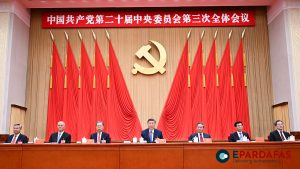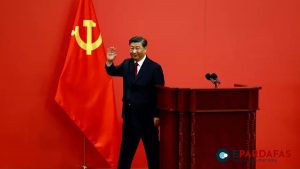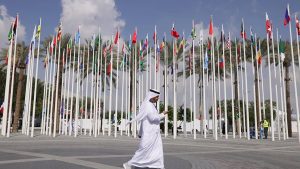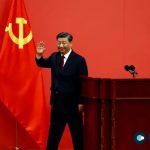
Unveiling Public Sentiment: Nepal’s Perceptions of India and China
In the ever-evolving landscape of international relations, understanding public perceptions of neighboring countries is crucial in shaping diplomatic strategies and policies. A recent public opinion survey conducted in Nepal sheds light on the nuanced perceptions of India and China among Nepali citizens. The study, led by Rahul Karan Reddy and supported by the Organization for Research on China and Asia (ORCA), delves into the complex interplay of cultural ties, economic linkages, and public diplomacy efforts that shape the way Nepal views its two influential neighbors.
Cultural and Historical Affinities: India’s Relatability
The survey, encompassing more than 180 citizens across various locations in Kathmandu, reveals a captivating narrative. It underscores the profound impact of shared cultural and historical ties between Nepal and India. The basis of this enduring relationship lies in the strong sense of relatability forged from centuries of shared identity, language, and religious practices. This deep-rooted connection forms a robust foundation that transcends political differences and creates a sense of familiarity between ordinary Nepali citizens and their Indian counterparts.
Economic Opportunities and Diplomacy
Beyond cultural affinities, the survey points to India’s pivotal role in Nepal’s economic landscape. India emerges as Nepal’s primary development partner, a fact acknowledged by 60% of the respondents who consider India more relevant to Nepal’s economic progress than China. This perception is grounded in the realistic accessibility of market opportunities provided by India, including employment prospects, educational avenues, and economic linkages like hydrocarbon trade and cross-border electricity transmission. These tangible benefits strengthen Nepal’s perception of India’s role as an economic ally.
Public Diplomacy and Visibility
The survey unveils intriguing insights into the public diplomacy strategies employed by India and China. Notably, the majority of respondents, 70%, believe that India holds a more visible presence in public spaces across Kathmandu compared to China. This visibility, coupled with India’s investments in smaller projects like schools and hospitals, generates positive resonance among the Nepali populace. Surprisingly, while China’s public diplomacy efforts are perceived as successful by a significant 45% of respondents, its high-profile infrastructure projects do not resonate as strongly as India’s more pervasive footprint.
Balancing Economic Relations
The survey illustrates the citizens’ pragmatic approach to economic engagement. Both India and China are perceived to perform similar roles in Nepal’s economic development, emphasizing the competition for influence. The respondents expect both countries to prioritize development aid and trade, followed by education opportunities. This inclination towards a balanced approach reflects Nepal’s understanding of its economic priorities and the value of maintaining cooperative relationships with both neighbors.
Strength and Stability of Relations
An intriguing aspect of the survey revolves around the perceived strength and stability of Nepal’s relations with India and China. Despite occasional political tensions, the public sentiment paints a picture of stability. Notably, 50.5% of respondents assign a score of 6 to 8 for India-Nepal relations, while 42% do the same for China-Nepal relations. While China garners slightly higher scores at the extreme ends of the scale, indicating a certain level of positivity, the overall perception suggests that Nepal’s relations with India remain stronger and more stable.

Implications and Conclusions
The findings of this survey carry significant implications for both scholars and policymakers. They underscore the enduring impact of cultural connections and the importance of economic opportunities in shaping public perceptions. While India’s deep-rooted ties and economic contributions have solidified its favorable image, China’s increasing visibility and diplomatic efforts show signs of resonating with the Nepali public. As Nepal navigates its dynamic democratic landscape and strives for economic development, maintaining a balanced approach in engaging with both India and China appears to be the optimal strategy.
In essence, this survey unravels the intricate tapestry of Nepal’s perceptions of India and China. It reveals a multi-dimensional understanding of the factors that influence public sentiment and provides valuable insights for those tasked with steering the diplomatic course of these nations. As Nepal continues its journey, such research driven by on-ground observations stands as a testament to the importance of understanding and responding to public perceptions in international relations.
About Author

Rahul Karan Reddy is an international relations analyst with a Masters degree from O.P Jindal Global University in Diplomacy, Law and Business. He is the author of ‘Islands on the Rocks’, a monograph detailing the Senkaku/Diaoyu island dispute between China and Japan. His research focus is China and East Asia. He was a research analyst at the Chennai Center for China Studies (C3S) and an intern at the Institute for Peace and Conflict Studies (IPCS), writing articles and reports on China’s foreign policy and domestic politics. His blog, Asian Drama, follows the rise of India and China as they navigate the Asian Century.













Comments